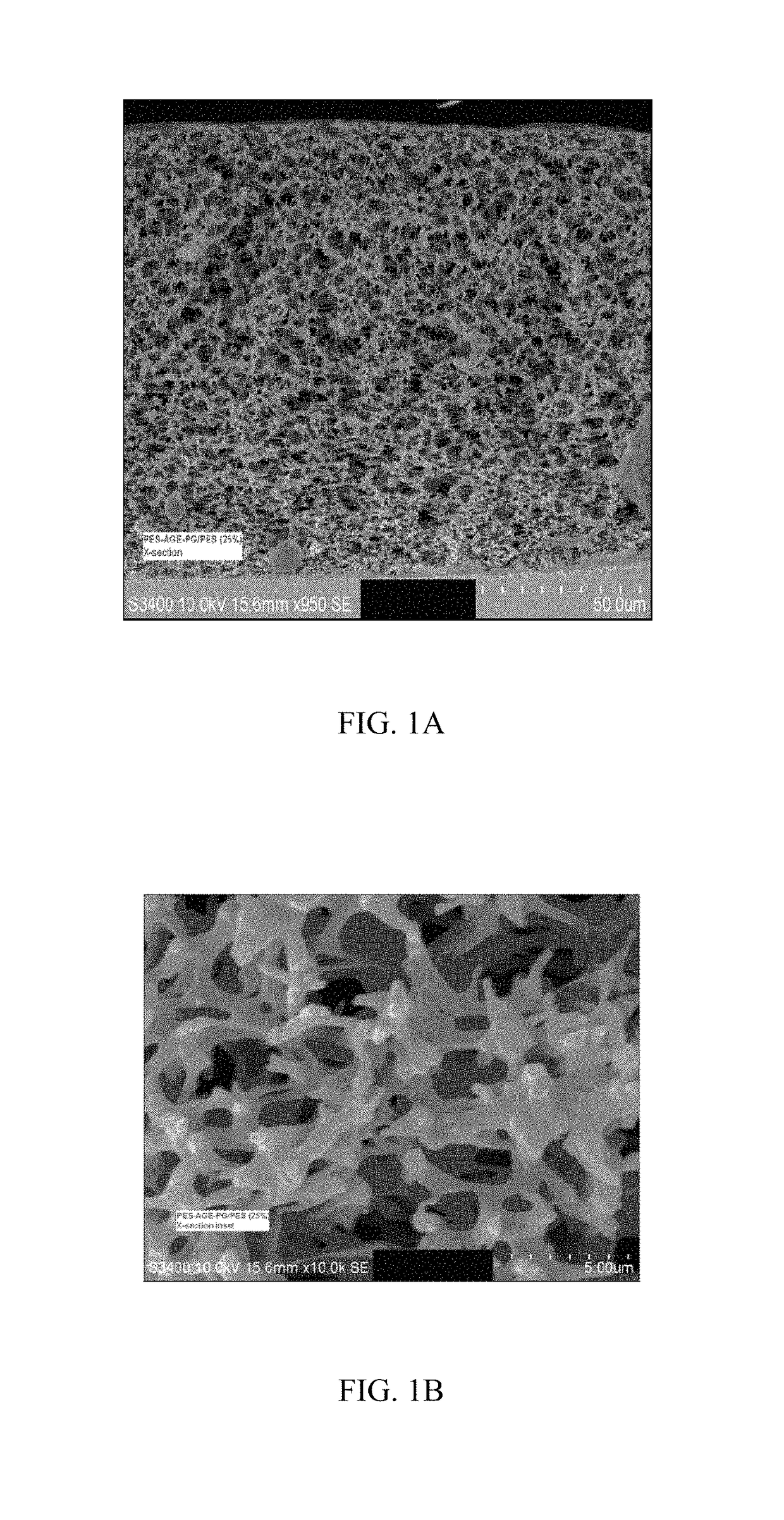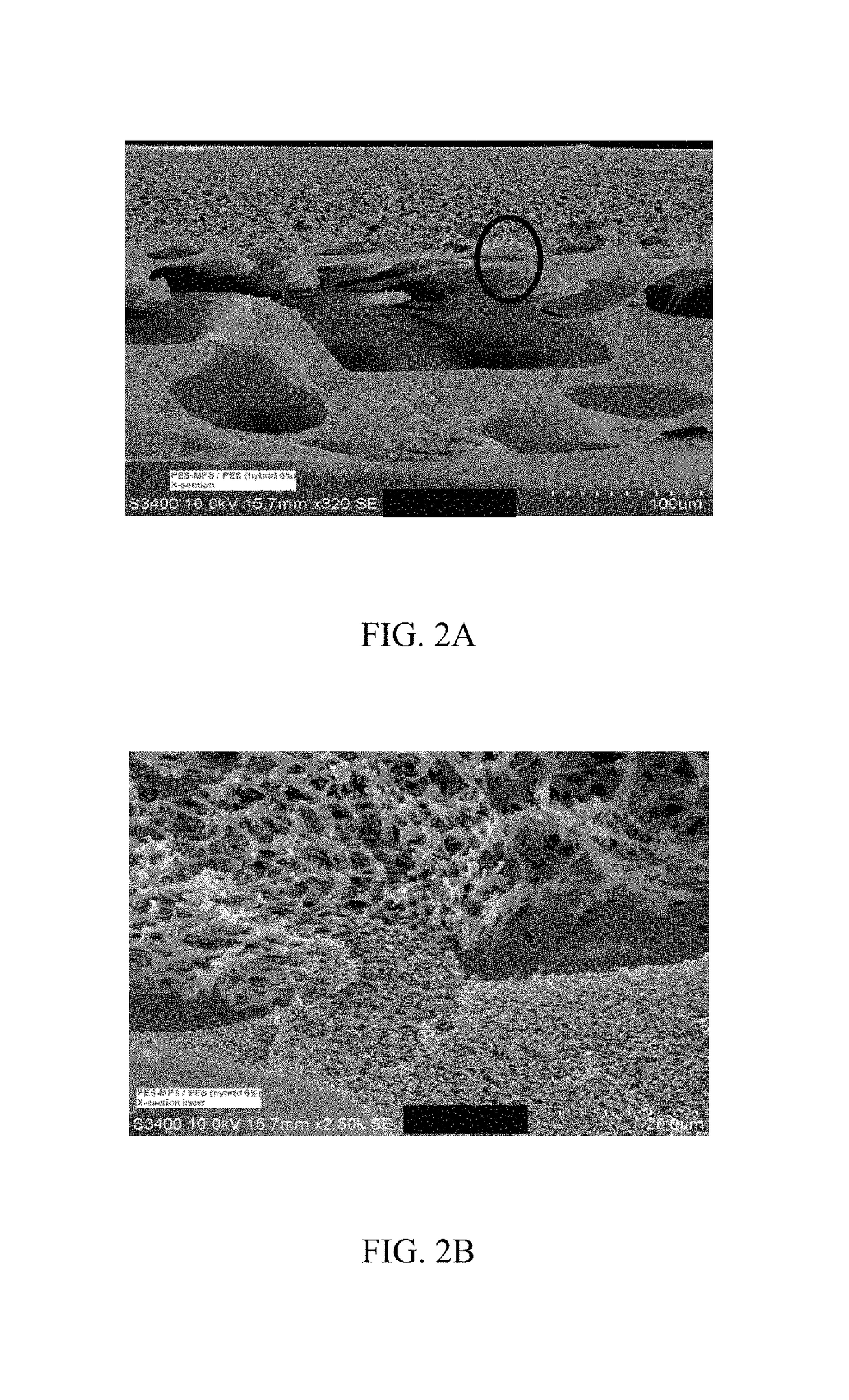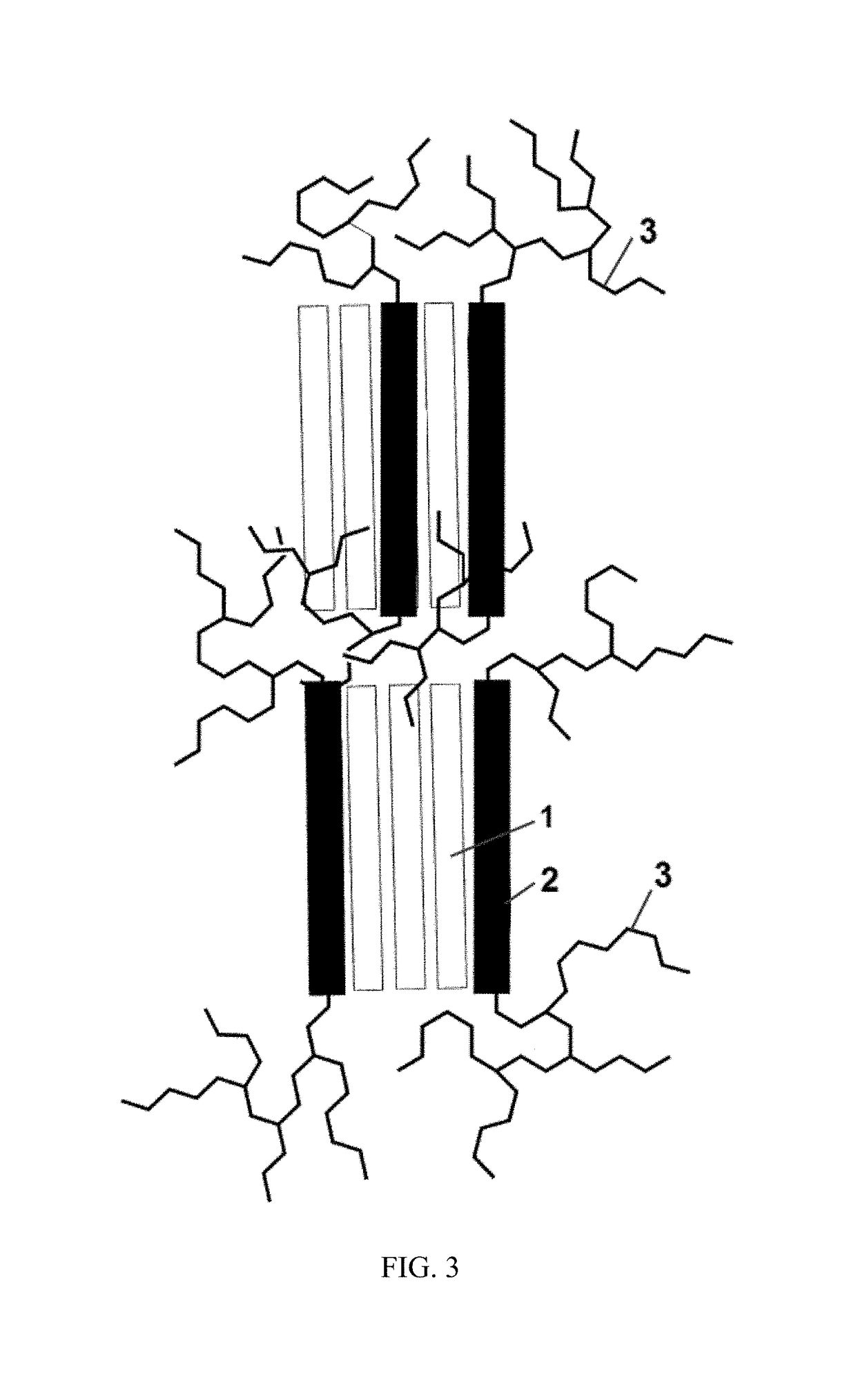Hydrophilic block copolymers and membranes prepared therefrom (II)
a technology of hydrophilic block and copolymer, which is applied in the field of hydrophilic block copolymer and membrane prepared therefrom, can solve the problems of lack of reproducibility, lack of stability of modification, lack of desirable surface properties, etc., and achieves strong adhesion and low extraction rate
- Summary
- Abstract
- Description
- Claims
- Application Information
AI Technical Summary
Benefits of technology
Problems solved by technology
Method used
Image
Examples
example 1
[0091]This example illustrates the preparation of a block copolymer of polyethersulfone and allyl glycidyl ether in accordance with an embodiment of the invention.
[0092]BASF ULTRASON E6020 polyethersulfone (100 g) was added slowly to DMAc (250 g) in a 1 L reactor with overhead stirrer at 110° C. After complete dissolution of the polymer, K2CO3 (2.5 g) was added. After additional 2.5 hrs of stirring at 110° C., allyl glycidyl ether (100 mL) was added, and reaction mixture stirred at 110° C. for 19 hours. The hot reaction mixture was added to a vigorously stirring IPA (3 L), and stirring was continued for three more hours. The mixture was filtered and the resulting product resuspended in IPA (1.5 L). After additional 3 hours of stirring, the product was filtered and washed in 30% IPA in water and in IPA (200 mL). The resulting product was dried in a vacuum oven at 50° C. overnight to obtain 105 g of an A-B-A type copolymer of PES and allyl glycidyl ether, PES-PolyAGE. Proton NMR chara...
example 2
[0093]This example illustrates the preparation of another block copolymer of polyethersulfone and allyl glycidyl ether in accordance with an embodiment of the invention.
[0094]BASF ULTRASON E7020 (200 g) polyethersulfone was added slowly to DMAc (600 mL) in a 1 L reaction flask at 110° C. After complete dissolution of the polymer, K2CO3 (10 g) was added. After an additional 1 hr of stirring at 110° C., the reaction mixture was purged with nitrogen for 10 minutes, and allyl glycidyl ether (200 g) was added. The reaction mixture was stirred at 110° C. for 72 hours and precipitated in methanol (2 L), filtered and the solid obtained was re-suspended in methanol (750 mL). After an additional 5 hours of stirring, the product obtained was filtered, and washed in 30% methanol in water and in methanol (100 mL). The product obtained was dried in a vacuum oven at 50° C. overnight yielding 260 g of the desired product, an A-B-A type copolymer of PES and allyl glycidyl ether. Proton NMR character...
example 3
[0095]This example illustrates the preparation of a hydrophilic block copolymer, PES-MAA, in accordance with an embodiment of the invention.
[0096]15 g of the copolymer PES-PolyAGE from Example 2 was dissolved in DMAc (30 mL) at 80° C. After complete dissolution of the polymer, the solution was purged with nitrogen for five minutes and thioglycolic acid (or mercaptoacetic acid) (15 mL) and 2,2′-azobis(2-methylpropionamidine)dihydrochloride (750 mg) were added. The reaction mixture was stirred at 80° C. overnight. The hot solution was added drop-wise to ethanol (250 mL), and the resulting precipitate was further stirred in ethanol for 2 hours. The precipitate was filtered, rinsed with 0.1 M NaOH (150 mL), water (300 mL), and ethanol (100 mL), and dried in a vacuum oven at 50° C. overnight to obtain 17 g of the desired product PES-MAA. Proton NMR characterization showed the presence of 62 mol % of PES, 30 mol % of mercaptoacetic acid, and 8 mol % of allylglycidyl ether remaining in the...
PUM
| Property | Measurement | Unit |
|---|---|---|
| temperature | aaaaa | aaaaa |
| temperature | aaaaa | aaaaa |
| temperature | aaaaa | aaaaa |
Abstract
Description
Claims
Application Information
 Login to View More
Login to View More - R&D
- Intellectual Property
- Life Sciences
- Materials
- Tech Scout
- Unparalleled Data Quality
- Higher Quality Content
- 60% Fewer Hallucinations
Browse by: Latest US Patents, China's latest patents, Technical Efficacy Thesaurus, Application Domain, Technology Topic, Popular Technical Reports.
© 2025 PatSnap. All rights reserved.Legal|Privacy policy|Modern Slavery Act Transparency Statement|Sitemap|About US| Contact US: help@patsnap.com



